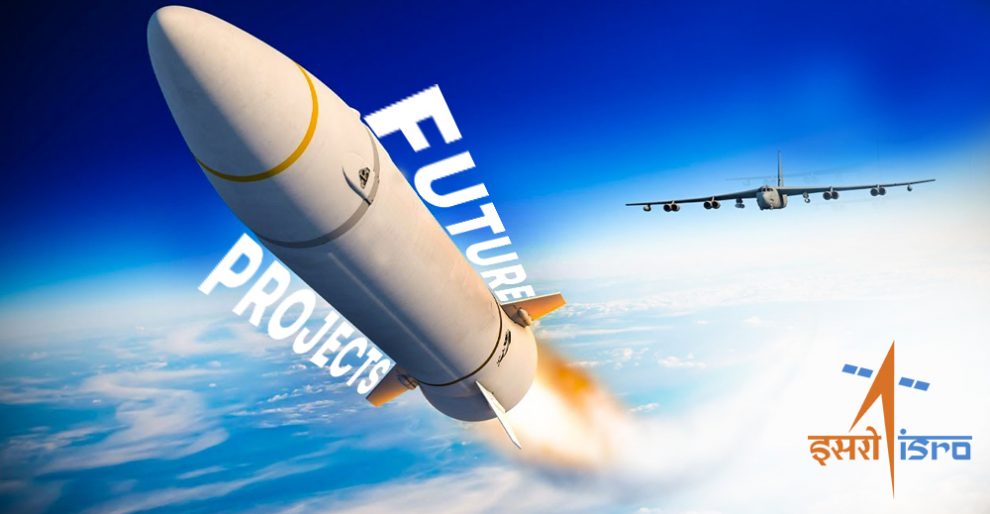COVID-19 pandemic had made delays to the Space missions in India this year with all the mission launches planned for 2020 having been postponed to 2021 or later. There has been a chain of achievements for ISRO beforehand. ISRO is still working hard and hoping for success in the future years. Some of the future missions of ISRO are given below.
Gaganyaan
It is expected that ISRO will be launching Gaganyaan in December 2021. Gaganyaan will carry 2-3 astronauts and reach a height of 400kms. It will orbit earth for up to 7 days. It will carry out some experiments in space and then return back to earth. ISRO had aimed to send Indians to space before the country completes its 75th year of independence on 15 August 2021. COVID-19 pandemic had made the progress slow and the timelines have now been revised.
Chandrayaan 3
After the partial failure of Chandrayaan 2 that was launched in 2019, ISRO will be launching Chandrayaan 3. It is expected to land on the south pole of the moon and study the moon’s geography. The Chandrayaan 2 mission was planned to land on the moon’s far side. In spite of complications in the final minutes before landing there occurred a communication loss with the lander-rover module, which crash-landed on the surface at a higher-than-planned velocity. Orbiter of the Chandrayaan 2 still performs science experiments and maps the lunar surface from an altitude of 100 kilometres.
The Finance Minister during the Budget session, had said, “2021 will be the year of Chandrayaan-3.” However, Sivan told that the mission has been delayed again, and will take a year more in 2022 with no specification of a date or month.
“We are working on it. It is the same configuration like Chandrayaan-2 but it will not have an orbiter. The orbiter launched during Chandrayaan-2 will be used for Chandrayaan-3,” ISRO chief K Sivan told PTI. “With that we are working on a system and mostly the launch will be next year in 2022,” he added.
Chandrayaan 3 will have identical components – a lander and a rover – without the orbiter as the Chandrayaan 2 orbiter is operating well. The shortage of an orbiter reduces overall mission cost, to an estimated Rs 6.15 billion which is less than Rs 9.7 billion that it cost ISRO to carry out the Chandrayaan 2 mission.
Shukrayaan-1
ISRO will launch Shukrayaan-1. It will travel for millions of kms and reach the planet Venus. Shukrayaan-1 will revolve very close to Venus and study its surface and atmosphere. It is expected to launch in 2023.
Mangalyaan 2
It has been a good news since India announced its upcoming Mars mission. Mangalyaan 2, the orbiter-only mission, will be similar to Mangalyaan 1. While ISRO was to announce a target date for the Mars mission, Sivan said Mangalyaan 2 will only be undertaken after Chandrayaan 3 is launched.
The landing on Mars is tougher and that Chandrayaan-3 will demonstrate ISRO’s landing capabilities, Sivan added.
Mangalyaan-1 is “still working good” and sending data. Sivan said “Right now, we are thinking about the orbiter mission only. Rover, lander…we are at least not thinking in this process.”
Sivan said the space agency had earlier asked the scientific community for suggestions on possible experiments to carry out on Mars. ISRO is in the process of receiving these inputs, he added.
“Once we get these suggestions, we will prepare a project report and have discussion in (an expert) committee. Then we will go to the Space Commission,” Sivan said.
In November 2013, the Mangalyaan-1 mission or Mars Orbiter Mission (MOM) was launched. It entered Mars orbit in September 2014. This was India’s first attempt to successfully reach another planet. It cost Rs 450 crore for spacecraft, ground segment and launch vehicle and became one of the cheapest missions to Mars till date. The mission was developed to work for six months. It is now in its seventh year running. The Mars Orbiter has given thousands of pictures of the Red Planet.
Somewhere around 2025, ISRO is planning its own space station that will revolve around the earth and help in conducting space research. All these future missions are expected to create a successful mark to the journey of the ISRO.
0

